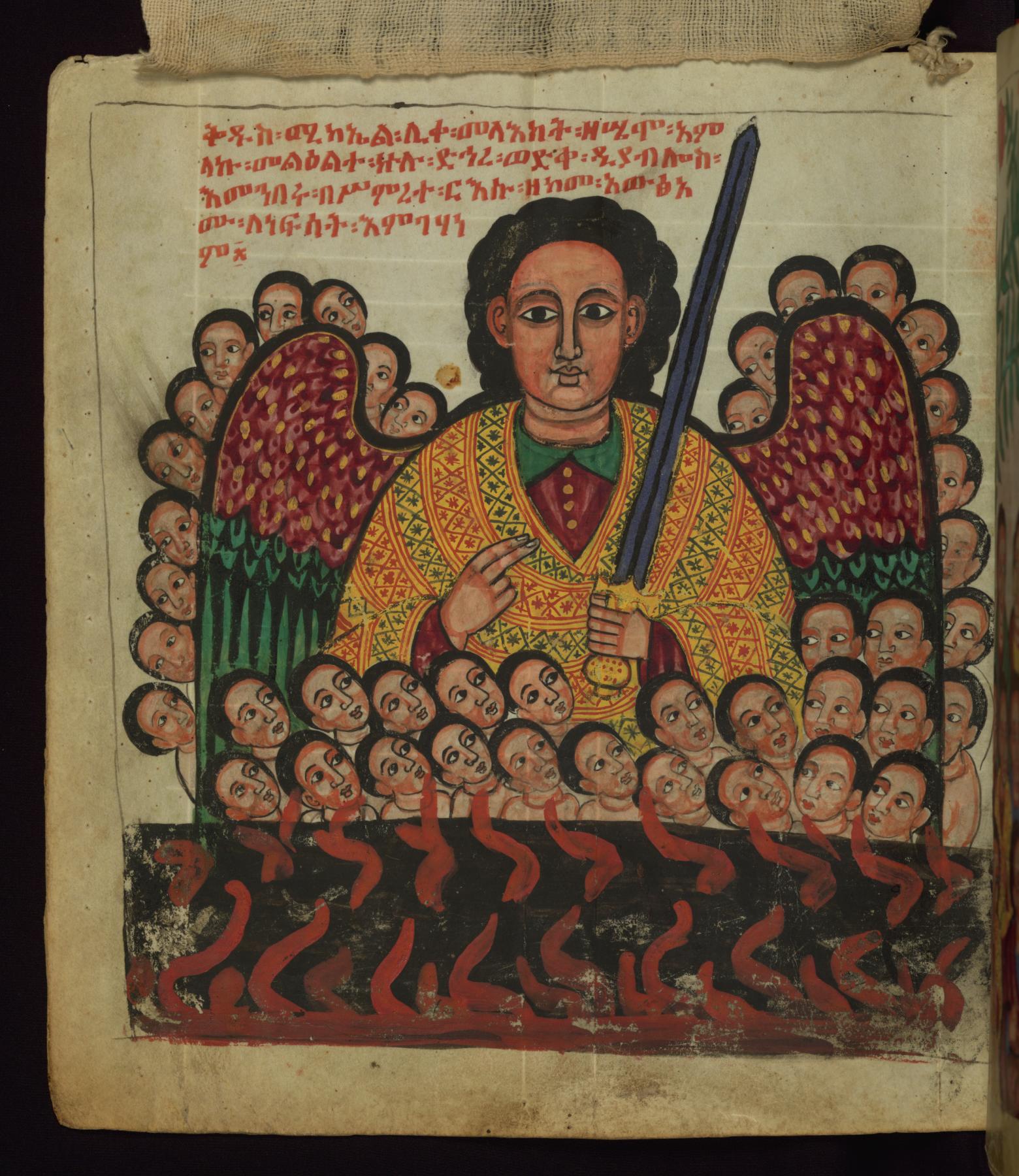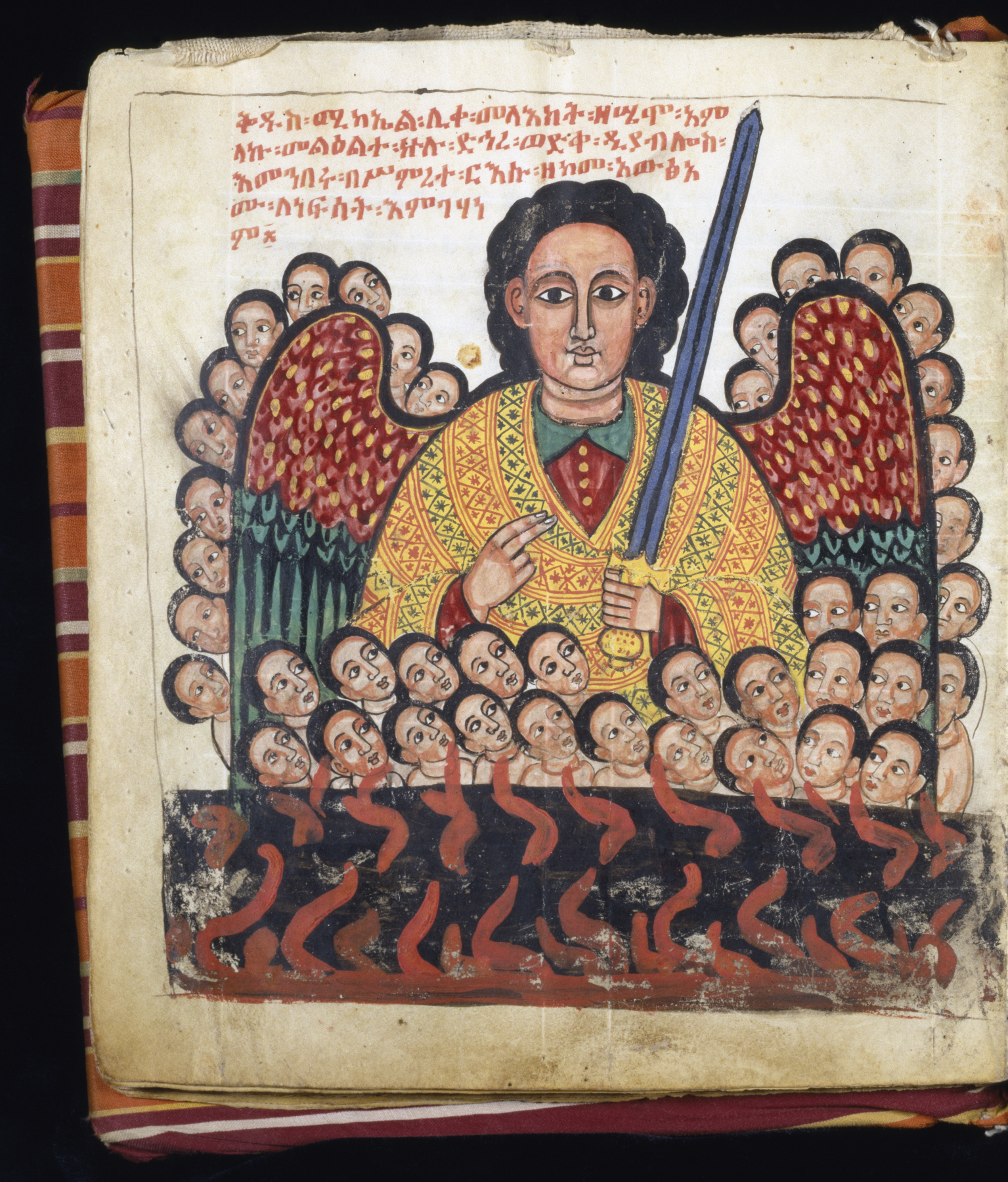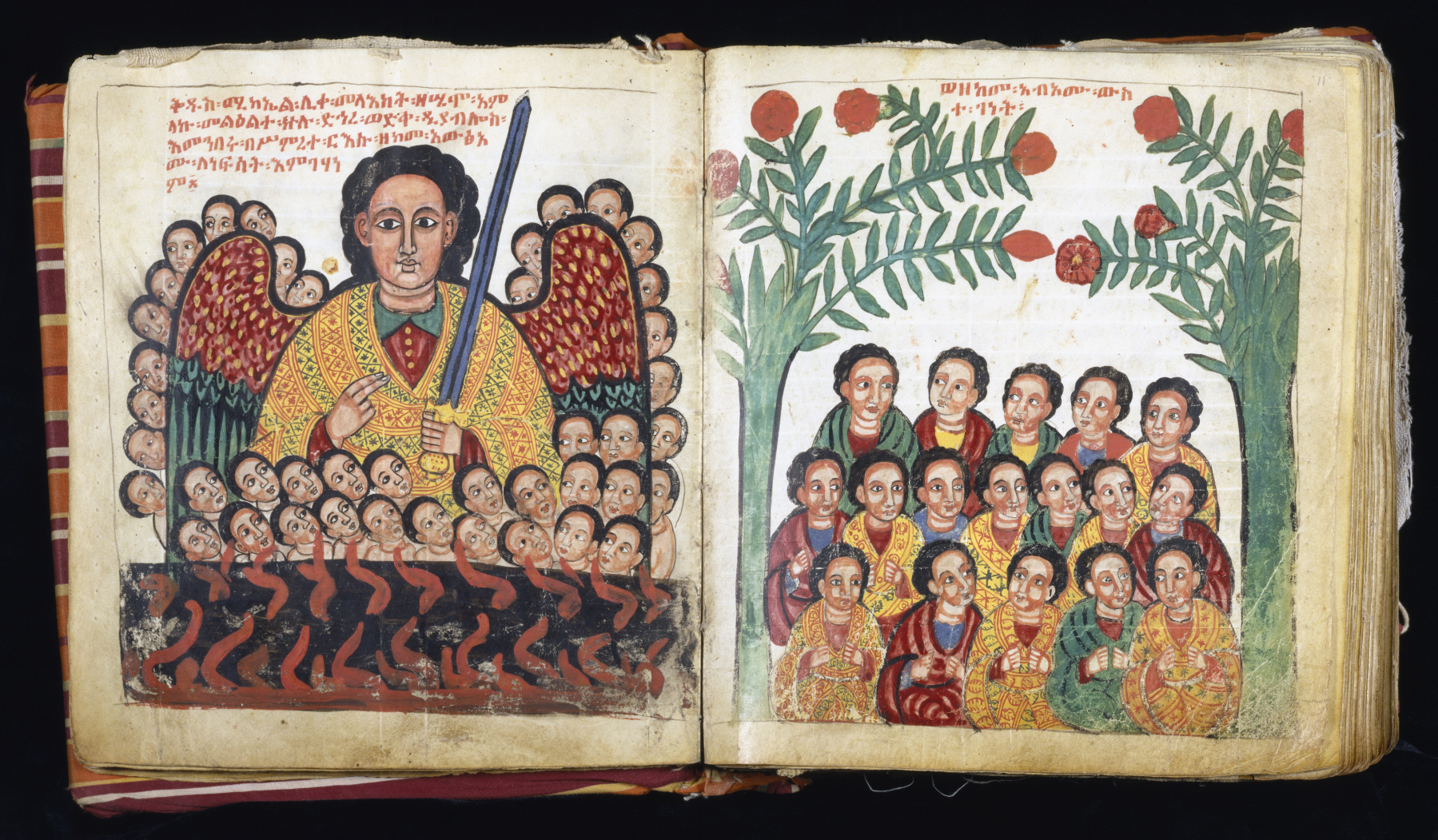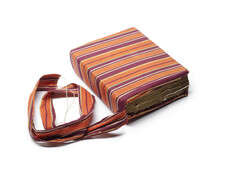Leaf from a Gondar Homiliary: St. Michael Rescues the Faithful from the Flames of Hell
(Manuscripts and Rare Books, Ethiopia)
The establishment of a permanent court at Gondar by the Solomonic emperor Fasilädäs (reigned 1632-67) marked the beginning of a period of tremendous cultural productivity. The region became one of the most important artistic production centers of Ethiopia, particularly in regard to painting. Featuring nearly fifty full-page illuminations, this manuscript is a pristine example of the lavishly illustrated books commissioned by both private and institutional patrons during this period. The archangel Michael, whose cult first emerged under the patronage of Emperor Zär'a Ya'eqob, remains the most venerated archangel in Ethiopia, largely due to his role as an intercessor on behalf of the faithful. This manuscript combines the monthly liturgical commemoration of Michael with narrative scenes of his miracles. Successive portions of the book, essentially a compilation of sermons, were read aloud on particular feast days. In this folio Saint Michael rescues the faithful from the flames of hell, while those already saved are depicted in paradise on the facing page (fol. 11r). The minutely rendered textiles in these pictures suggest a connection with the fashions of the Gondarine court and indicate that the painters depicted their scriptural subjects using a visual language rooted in contemporary culture. The neutral ground of these paintings is characteristic of early Gondarine manuscripts. Unlike their predecessors, the painters did not blind-rule their pictorial compositions, rather, the horizontal lines visible throughout the pictures indicate that they worked on parchment sheets originally prepared for writing.
Provenance
Provenance (from the French provenir, 'to come from/forth') is the chronology of the ownership, custody, or location of a historical object.
Gäbrä and Giyorgis Sellase [date and mode of acquisition unknown]; Kidanä and Sählä Maryam [date and mode of acquisition unknown]; Joseph Knopfelmacher Collection, New York, No. 2 [date and mode of acquisition unknown]; Sale, Wright Gallery, New York, 1995-1996; Walters Art Museum, 1996, by purchase.
Exhibitions
| 2006-2007 | Angels of Light: Ethiopian Art from the Walters Art Museum. Birmingham Museum of Art, Birmingham; Smith College Museum of Art, Northampton; Museum of Biblical Art, New York. |
Geographies
Ethiopia, Gondar (Place of Origin)
Measurements
H: 10 x W: 9 1/16 in. (25.4 x 23 cm)
Credit Line
Museum purchase with funds provided by the W. Alton Jones Foundation Acquisition Fund, 1996
Location in Museum
Not on view
Accession Number
In libraries, galleries, museums, and archives, an accession number is a unique identifier assigned to each object in the collection.
In libraries, galleries, museums, and archives, an accession number is a unique identifier assigned to each object in the collection.
W.835.10V







